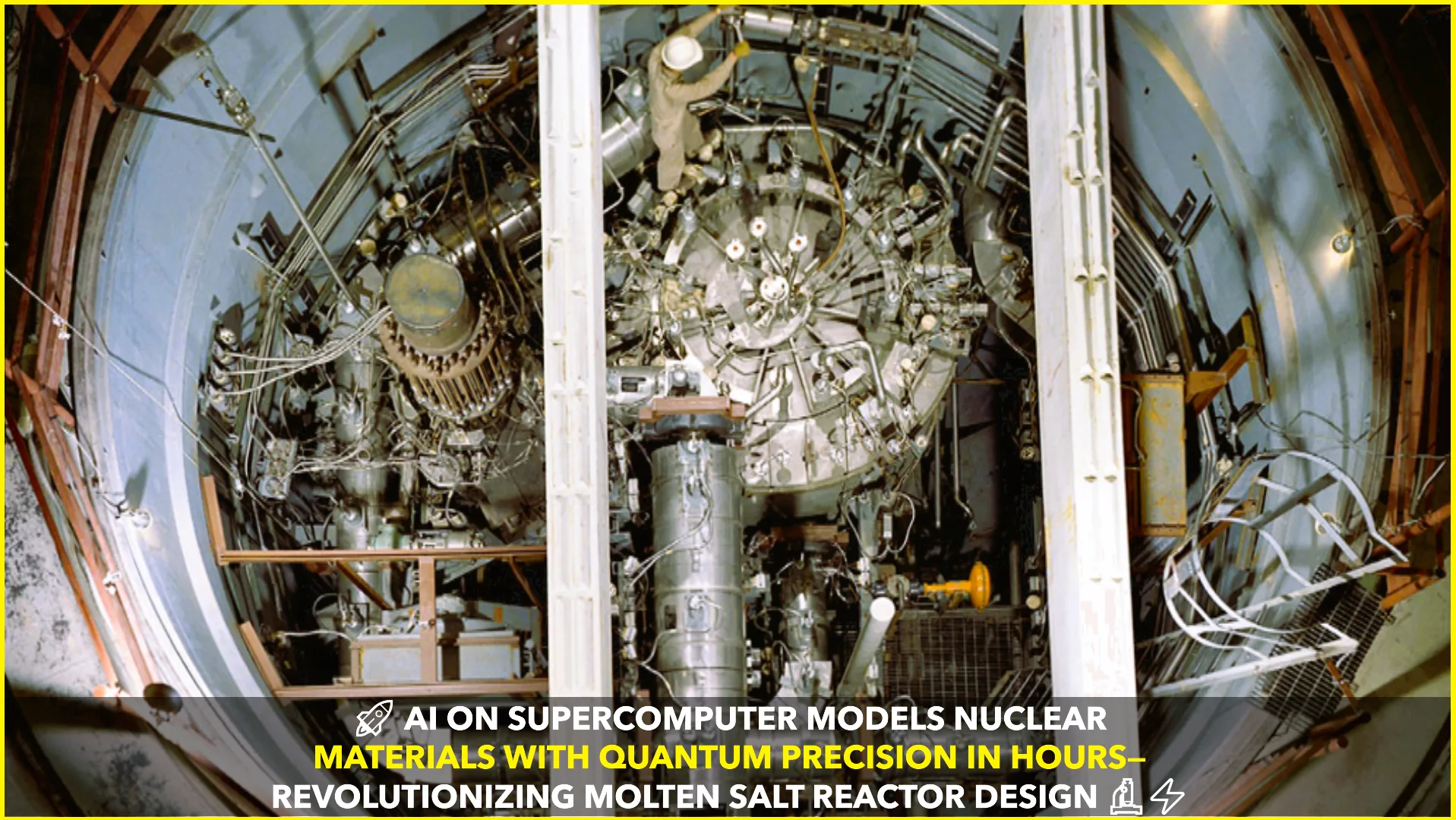June, 2025 — Oak Ridge, Tennessee
In a major leap for clean energy technology, scientists at Oak Ridge National Laboratory (ORNL) have used artificial intelligence (AI) and one of the world’s most powerful supercomputers to simulate the behavior of molten salt reactor materials with quantum-level accuracy — and in a fraction of the time traditionally required.
This breakthrough, led by ORNL researchers using the Summit supercomputer, has the potential to significantly accelerate the development of advanced nuclear reactors, particularly molten salt reactors (MSRs), which are known for their safety, efficiency, and long-lasting fuel cycles.
A Fusion of AI and High-Performance Computing
Molten salt reactors use a liquid mixture of salts as both fuel and coolant. Understanding how these materials behave at the atomic level is critical to their safe design and long-term operation. Traditionally, modeling the complex chemistry of molten salts with quantum accuracy could take days or even weeks, using extremely expensive and resource-heavy simulations.
However, in a study recently published in npj Computational Materials, researchers have demonstrated that AI models trained on quantum mechanical data can deliver nearly the same accuracy in just a few hours. This was made possible by running deep learning models on Summit, America’s fastest supercomputer, housed at the Oak Ridge Leadership Computing Facility.
“We’ve effectively taken the precision of quantum simulations and scaled it to systems that are millions of times larger,” said Travis Humble, director of the lab’s Quantum Science Center. “This is a game-changer for nuclear energy research.”
Simulating the Future of Nuclear Power
The AI models developed by the Oak Ridge team are capable of predicting the thermodynamic properties of molten salt mixtures — including phase stability and corrosion behavior — which are vital for the design of durable reactor components.
By using machine learning models trained on data from density functional theory (DFT), a standard method in quantum chemistry, the team replicated results at a level of detail previously thought unachievable without exhaustive calculations.
This not only shortens development timelines but also significantly reduces costs, allowing for rapid prototyping and testing of new materials before they’re physically built.
Safer, Cheaper, and More Efficient Nuclear Reactors
Molten salt reactors are being heralded as a promising alternative to traditional nuclear reactors. They offer inherent safety features, such as passive cooling and atmospheric pressure operation, and can potentially run on recycled nuclear waste.
“Understanding the behavior of molten salts is the key to unlocking a new generation of reactors that are cleaner, safer, and more sustainable,” said Tim Smith, a materials scientist involved in the study.
With this AI-powered advancement, the U.S. is positioning itself as a leader in next-generation nuclear technology, supporting clean energy goals while maintaining energy security.
Looking Ahead
This development marks just the beginning of AI’s role in transforming nuclear science. ORNL scientists hope to expand their work to simulate other reactor materials and operating conditions, further reducing the time from research to deployment.
As the world looks for climate-resilient energy solutions, AI and supercomputing may very well hold the key to making nuclear power both accessible and affordable.
Sources:










